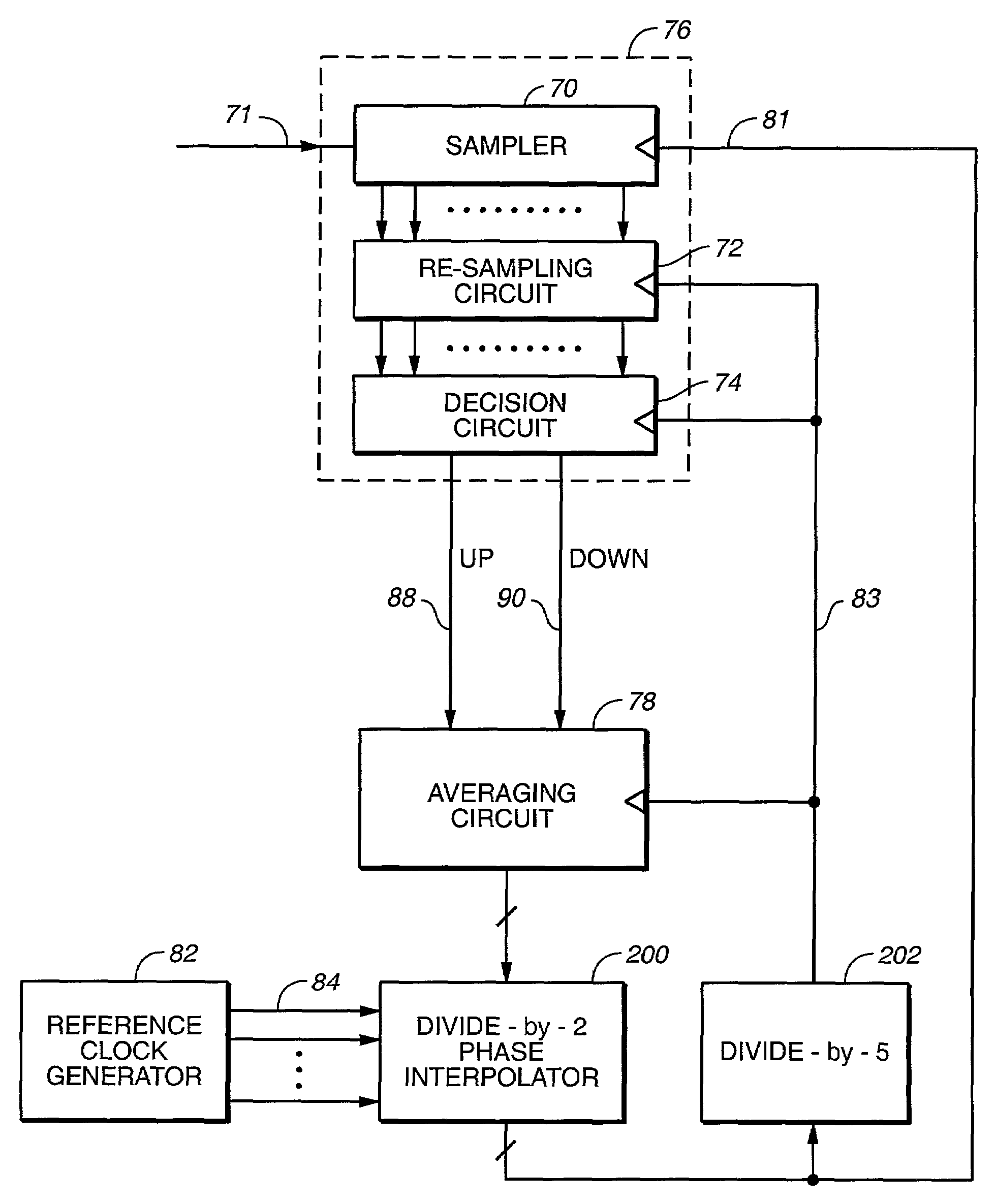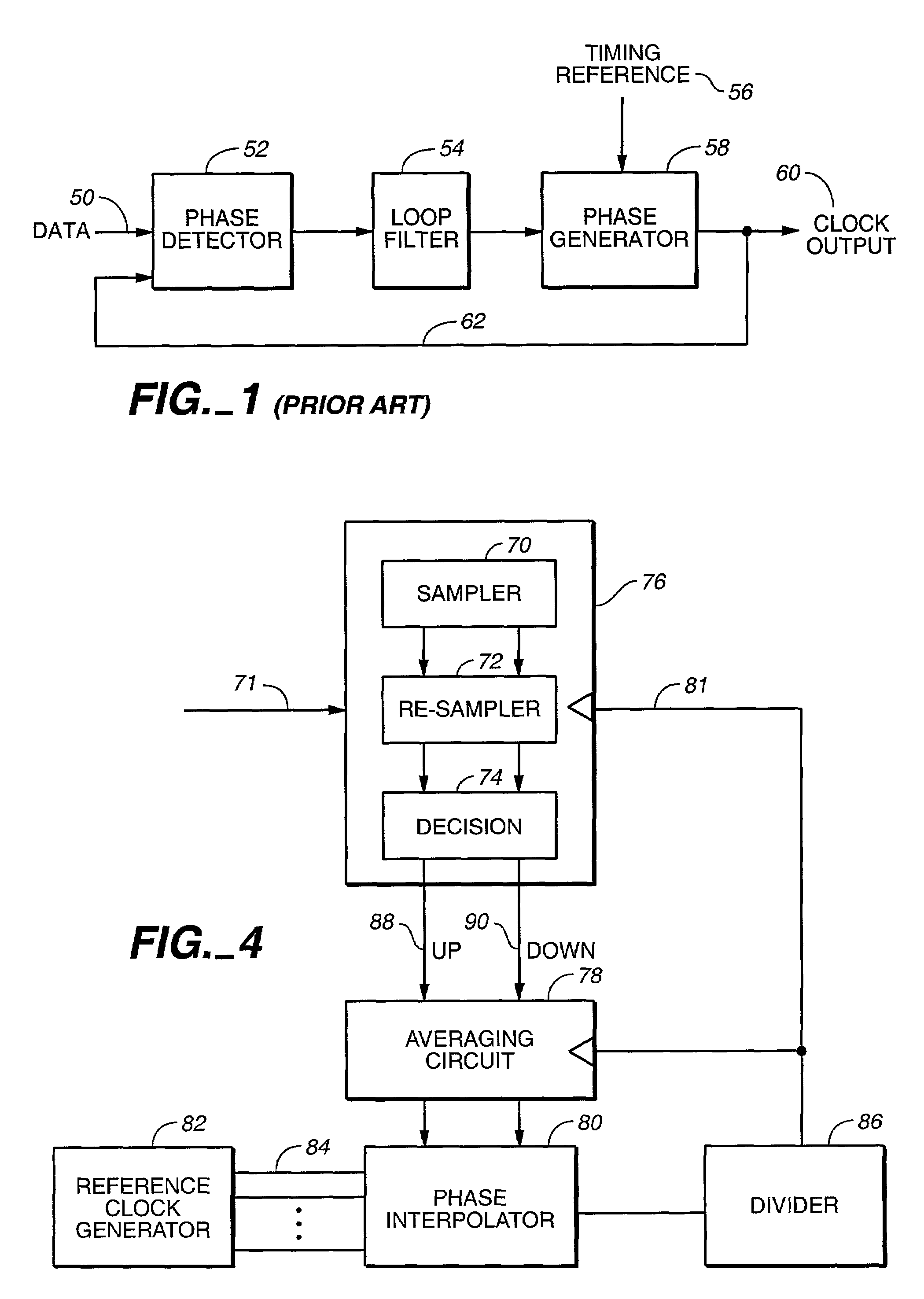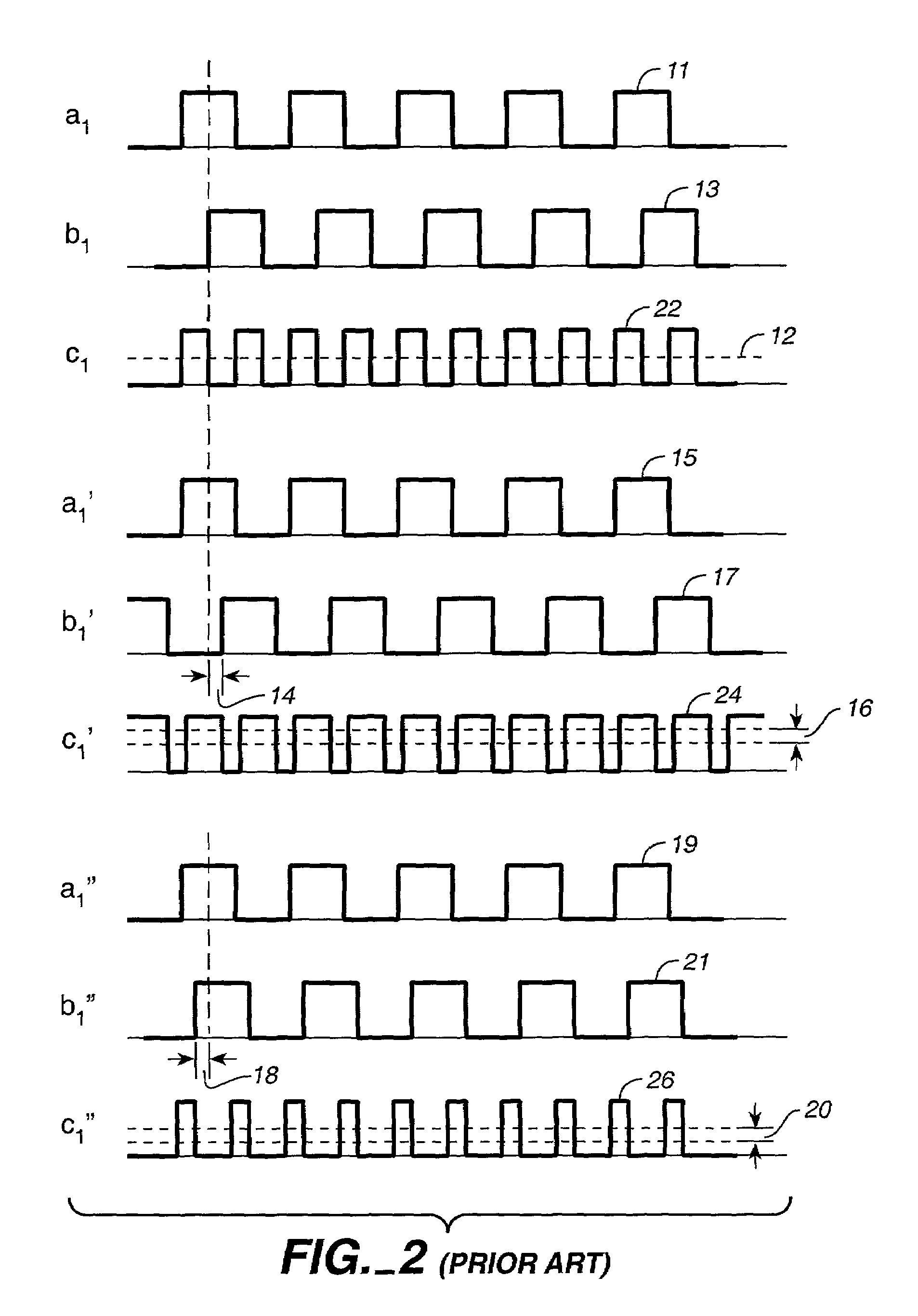Method and apparatus for high-speed clock data recovery using low-speed circuits
a clock and low-speed technology, applied in the field of clock data recovery circuits, can solve the problems of low manufacturing yield, high processing frequency requirements, and high cost of alternative technologies, and achieve the effect of reducing the processing frequency requiremen
- Summary
- Abstract
- Description
- Claims
- Application Information
AI Technical Summary
Benefits of technology
Problems solved by technology
Method used
Image
Examples
Embodiment Construction
[0020]With reference to FIG. 4, sampler 70, a re-sampler 72, a decision circuit 74, an averaging circuit 78, a reference clock generator 82, and a phase interpolator 80, and a divider 86 are all seen to be electrically connected. The sampler 70, the re-sampler 72 and the decision circuit 74 as a group could be viewed as the phase detector in a conventional CDR circuit, while the reference clock generator 82 and the phase interpolator 80 as a group could be looked upon as a phase generator. The averaging circuit is the equivalent of a loop filter in a conventional CDR.
[0021]The goal of the CDR of the present invention is to maintain the primary sampling clock phase generated by the phase interpolator 80 at the eye, i.e. a point that is midway between transitions, of the each data bit. To do so, each bit of incoming data is sampled twice using a pair of clock signals with identical frequency but with a fixed phase difference that amounts to half the length of a data bit. Provided that...
PUM
 Login to View More
Login to View More Abstract
Description
Claims
Application Information
 Login to View More
Login to View More - R&D
- Intellectual Property
- Life Sciences
- Materials
- Tech Scout
- Unparalleled Data Quality
- Higher Quality Content
- 60% Fewer Hallucinations
Browse by: Latest US Patents, China's latest patents, Technical Efficacy Thesaurus, Application Domain, Technology Topic, Popular Technical Reports.
© 2025 PatSnap. All rights reserved.Legal|Privacy policy|Modern Slavery Act Transparency Statement|Sitemap|About US| Contact US: help@patsnap.com



